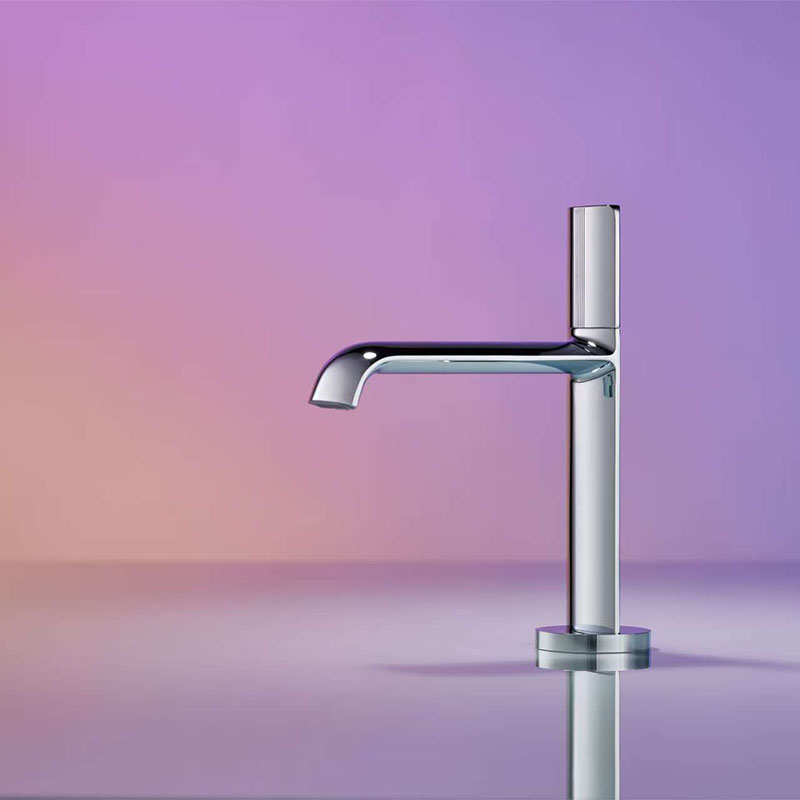Innovative Application Of Environmentally Friendly Materials in Bathroom Product Manufacturing
With the enhancement of global environmental awareness and the advancement of the "dual carbon" goal, the bathroom industry is accelerating its transformation to green manufacturing. The innovative application of environmentally friendly materials has not only become an important manifestation of corporate social responsibility, but also a key path to enhance product competitiveness and meet the sustainable needs of consumers.
1. Technological breakthroughs and classification of environmentally friendly materials
Application of bio-based materials
Bio-based materials are made from renewable resources through biological fermentation or chemical synthesis technology, and have the characteristics of degradability and low carbon emissions. For example, polylactic acid extracted from corn stalks is used to replace traditional plastics for the manufacture of shower housings or bathroom shelves, which not only reduces dependence on petroleum-based materials, but also reduces the environmental burden after the product is discarded. TOPSHINE tried to use bamboo fiber composite materials in shower handles, which has the same strength as ABS plastic, but reduces the carbon footprint by 40%.
Recycling of recycled metals
Metal materials such as recycled aluminum and recycled copper are re-smelted by recycling industrial waste or post-consumer metal products. Their performance is close to that of primary metals, but the energy consumption is only 5%-10% of primary materials. Metal parts such as faucets and pipes in bathroom products can be made from recycled metals. For example, a leading company in the industry uses 100% recycled aluminum to manufacture bathroom accessories, reducing carbon dioxide emissions by about 4 tons per ton of product.
Low-carbon ceramics and glass
Traditional ceramic production has high energy consumption and relies on non-renewable resources such as kaolin, while low-carbon ceramics reduce energy consumption by more than 30% by adding industrial waste to replace some raw materials and optimizing the firing process. In addition, the recycled glass basin made of recycled glass not only retains high hardness and corrosion resistance, but also gives the product a unique texture beauty.
Water-based paint and environmentally friendly surface treatment
The heavy metal pollution problem caused by traditional electroplating processes has been criticized, and water-based paint and physical vapor deposition technology have become alternatives. For example, the surface of a faucet using water-based fluorocarbon paint is not only more corrosion-resistant than traditional chrome plating processes, but also reduces volatile organic compound emissions by 90% during the production process.

2. Innovative application scenarios of environmentally friendly materials
Material optimization of water-saving products
The combination of environmentally friendly materials and water-saving technologies is an important trend in the bathroom industry. For example, the wear resistance and sealing of faucets with graphene-modified ceramic valve cores are significantly improved, and the water leakage rate can be reduced to less than 0.1%, extending the product life while reducing water waste. TOPSHINE's thermostatic shower system combines recycled copper valve bodies with intelligent temperature control modules to reduce energy consumption by 25%.
Modular design promotes material circulation
Modular bathroom products use standardized interface design to make components easy to disassemble and replace. For example, the bathroom cabinet uses a detachable bamboo fiber panel and a metal frame combination. When the panel ages, it can be replaced separately to avoid overall waste. This design not only extends the product life cycle, but also promotes the establishment of a "production-use-recycling" closed-loop system.
Integration of health functional materials
The application of antibacterial and anti-fouling materials has become the focus of bathroom product upgrades. For example, the surface of a ceramic toilet with nano-silver ions can inhibit the growth of 99% of bacteria; the shower room glass coated with photocatalytic paint decomposes organic stains under light and reduces the use of detergents. TOPSHINE introduces graphene heating film in smart toilet lids, which saves 30% energy compared to traditional metal heating bodies and has no electromagnetic radiation risk.
3. Industry Challenges and Future Directions
Although the application prospects of environmentally friendly materials are broad, the bathroom industry still faces multiple challenges:
Cost and technical maturity: The price of bio-based materials is generally higher than that of traditional materials, and some performance (such as high temperature resistance) still needs to be improved;
Consumer cognitive limitations: Some users have doubts about the quality of recycled materials, and market trust needs to be enhanced through certification standards (such as Cradle to Cradle);
Imperfect recycling system: It is difficult to recycle and classify bathroom products, and the cost of disassembly is high, which restricts the closed-loop utilization of materials.
In the future, the following directions will become the focus of industry breakthroughs:
Cross-border material research and development: For example, mycelium composite materials are used for bathroom anti-slip floor mats, which have both degradability and cushioning properties;
Digital production empowerment: 3D printing technology is used to achieve precise molding of environmentally friendly materials and reduce waste of scraps;
Policy and market coordination: Governments of various countries encourage companies to increase investment in environmentally friendly materials through policies such as carbon taxes and green subsidies.
The innovative application of environmentally friendly materials is reshaping the manufacturing logic and product value of the bathroom industry. From bio-based materials to recycled metals, from modular design to health function integration, these practices not only reduce the environmental impact of the industry, but also give rise to new market opportunities. For companies such as TOPSHINE, deepening material technology innovation and building a green supply chain will be the core strategy for achieving sustainable growth. In the future, bathroom products will not only be functional carriers, but also a "green declaration" for consumers to practice environmental protection concepts.


